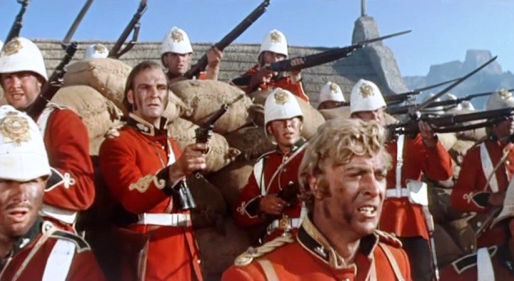top of page
Search
War Films
Film review of War related films from 1930 - 1999


Born on the Fourth of July (1989)
Oliver Stone’s Born on the Fourth of July (1989) is a harrowing, deeply personal, and politically charged film that stands as one of the most powerful anti-war dramas in American cinema. Based on the autobiography of Vietnam War veteran Ron Kovic, the film charts his journey from patriotic zealot to paraplegic war hero turned radical activist.

Soames Inscker
4 min read


The Desert Fox: The Story of Rommel (1951)
The Desert Fox is a striking and unusually nuanced war biopic that challenges the wartime cinematic trend of one-dimensional enemy portrayals. Directed by Henry Hathaway, this 1951 film offers a compelling dramatization of the final years in the life of Field Marshal Erwin Rommel, one of Nazi Germany's most respected—and controversial—military leaders.

Soames Inscker
4 min read


Love Story (1944)
In the middle of wartime Britain, when audiences yearned for solace, escapism, and romance, Gainsborough Pictures delivered a series of sweeping melodramas—and among them was Love Story (1944), a film that elegantly combines wartime anxiety, doomed love, and classical music into a richly sentimental drama.

Soames Inscker
4 min read


Twelve O'Clock High (1949)
Twelve O’Clock High is far more than just another World War II combat film. Released in 1949 and directed by veteran filmmaker Henry King, it is a sober, intelligent, and deeply affecting portrayal of military leadership under extreme duress. It eschews bombast and melodrama in favour of a grim realism and moral nuance that was rare in Hollywood’s post war era.

Soames Inscker
5 min read


Operation Petticoat (1959)
Blending wartime antics with sharp comedy and a splash of romantic absurdity, Operation Petticoat (1959) is one of the most endearing military comedies to emerge from the post-World War II era. Directed by the rising star Blake Edwards, produced by Robert Arthur, and starring Cary Grant and Tony Curtis, this film delivers a buoyant mix of slapstick, satire, and character-driven humour—anchored in one of the most outlandish premises of any WWII film: a pink submarine.

Soames Inscker
4 min read


The Final Countdown (1980)
The Final Countdown is a high-concept science fiction thriller with a military twist: What if a modern American aircraft carrier were transported back in time to the eve of the attack on Pearl Harbour?

Soames Inscker
5 min read


Midway (1976)
Midway (1976) is an ambitious World War II epic that dramatizes the U.S. Navy’s stunning victory over the Imperial Japanese Navy at the Battle of Midway, a critical turning point in the Pacific Theatre. Riding on the coattails of the 1970s revival in large-scale war films (following hits like Tora! Tora! Tora!), Midway assembled an all-star cast and employed extensive archival footage to bring the historic events of June 1942 to life.

Soames Inscker
4 min read


Red Dawn (1984)
Released during the height of Cold War anxiety, Red Dawn (1984) is an unapologetically jingoistic and militaristic fantasy in which the United States becomes the battleground for World War III. Directed by John Milius—a man known for his bombastic, patriotic filmmaking style—Red Dawn imagines a Soviet-led invasion of the American heartland and follows a group of high school students turned guerrilla fighters resisting the occupation.

Soames Inscker
4 min read


WarGames (1983)
Few films have managed to capture the anxieties of their time while simultaneously anticipating the technological future as elegantly as WarGames. Released in 1983, during the peak of Cold War paranoia and the dawn of the personal computing era, the film acts both as a nuclear-age thriller and a cautionary tale about the emergent digital world.

Soames Inscker
5 min read


Kelly's Heroes (1970)
Released in 1970, Kelly’s Heroes stands as one of the most peculiar and entertaining war films ever made—a mash-up of gritty World War II action, heist movie caper, anti-authoritarian satire, and irreverent comedy. Directed by Brian G. Hutton, who previously helmed the more traditional WWII thriller Where Eagles Dare (1968), Kelly’s Heroes offers a tonal shift from straightforward valour to something far more subversive and eccentric.

Soames Inscker
5 min read


Zulu (1964)
Zulu (1964) stands as one of the most iconic British war films ever made. Based on the real-life 1879 Battle of Rorke’s Drift during the Anglo-Zulu War, the film dramatizes the desperate defense of a remote mission station by a small contingent of British soldiers against thousands of Zulu warriors. Directed by American expatriate Cy Endfield and produced by its star, Stanley Baker, Zulu is an enthralling combination of widescreen spectacle, military drama, and character stud

Soames Inscker
5 min read


Von Ryan's Express (1965)
Von Ryan’s Express (1965) is a taut, thrilling, and occasionally unconventional World War II adventure film that combines the high-stakes tension of a prisoner-of-war drama with the pulse-pounding spectacle of a heist-like escape. Directed by Mark Robson and starring Frank Sinatra at the height of his cinematic charisma, the film rides a narrow but effective track between traditional war movie conventions and a more modern, morally ambiguous hero narrative.

Soames Inscker
5 min read


To Be or Not to Be (1942)
Few films have dared to laugh in the face of tyranny with the audacity, intelligence, and finesse of Ernst Lubitsch’s To Be or Not to Be. Released in March 1942, during the darkest early days of World War II, the film stands as a singular achievement in cinematic satire—a work that blends comedy with political critique in a manner that feels both subversive and human.

Soames Inscker
4 min read


The Way Ahead (1944)
Released in 1944, as World War II continued to engulf Europe, The Way Ahead stands as a poignant example of wartime British cinema—simultaneously a morale booster, a subtle piece of propaganda, and a genuinely moving character drama.

Soames Inscker
4 min read


Night Train To Munich (1940)
In the fraught lead-up to World War II, British cinema responded to rising geopolitical tensions with a wave of clever, patriotic, and suspenseful thrillers. Night Train to Munich (1940), directed by Carol Reed, is a standout in this cycle.

Soames Inscker
4 min read


Hope and Glory (1987)
Hope and Glory is John Boorman’s deeply personal, semi-autobiographical account of his childhood growing up in London during the Blitz of World War II. Unlike many wartime dramas that focus on trauma and heroism in the battlefield, Boorman’s film stays home, capturing the chaos, absurdity, and strange joys of life during war through the eyes of a young boy.

Soames Inscker
5 min read


The Killing Fields (1984)
The Killing Fields (1984), directed by Roland Joffé and produced by David Puttnam, is a powerful and harrowing film based on real events surrounding the Cambodian genocide under the Khmer Rouge regime.

Soames Inscker
4 min read


Top Gun (1986)
Released in 1986, Top Gun is a quintessential example of Reagan-era blockbuster cinema—patriotic, adrenaline-fueled, and stylized to the edge of fantasy. It catapulted Tom Cruise to superstardom, set the standard for aerial cinematography, and embedded itself in the cultural lexicon with quotes, catchphrases, and a legendary soundtrack.

Soames Inscker
5 min read


Dunkirk (1958)
Dunkirk (1958) is a sombre, character-driven war film depicting the British Army’s retreat and evacuation from Dunkirk, France, in 1940. Released nearly two decades after the actual events, it is one of the first major cinematic attempts to portray Operation Dynamo—the massive, hastily-organized evacuation effort that saved over 330,000 Allied troops and became a defining moment of British WWII history.

Soames Inscker
5 min read


633 Squadron (1964)
633 Squadron is a 1964 British war film that dramatizes the perilous missions of an elite RAF fighter-bomber squadron during World War II. Loosely based on real RAF operations, the film follows a fictional campaign involving daring low-level attacks against Nazi fortifications in Norway, particularly a heavily guarded munitions plant vital to Germany’s war effort.

Soames Inscker
5 min read
bottom of page


